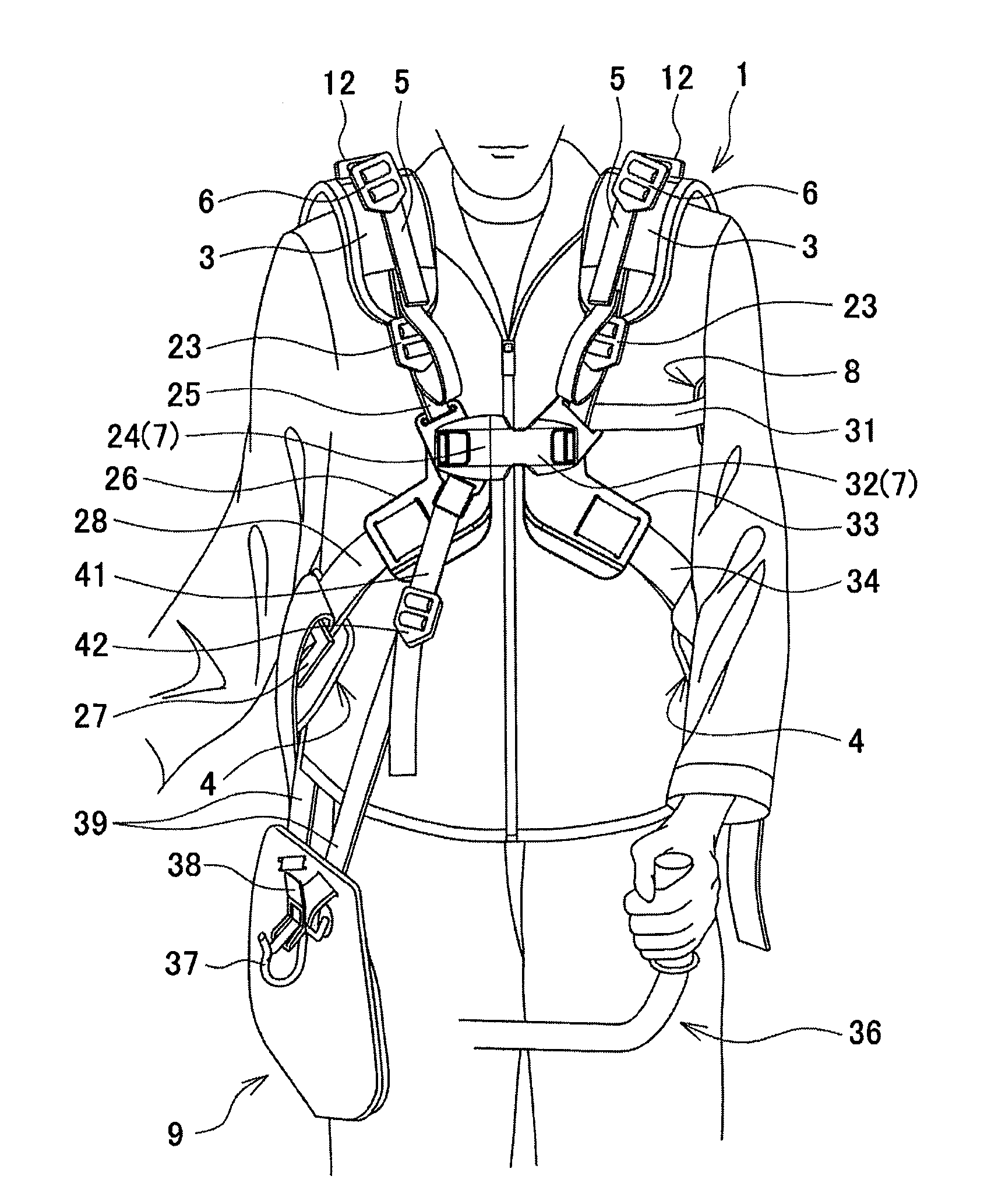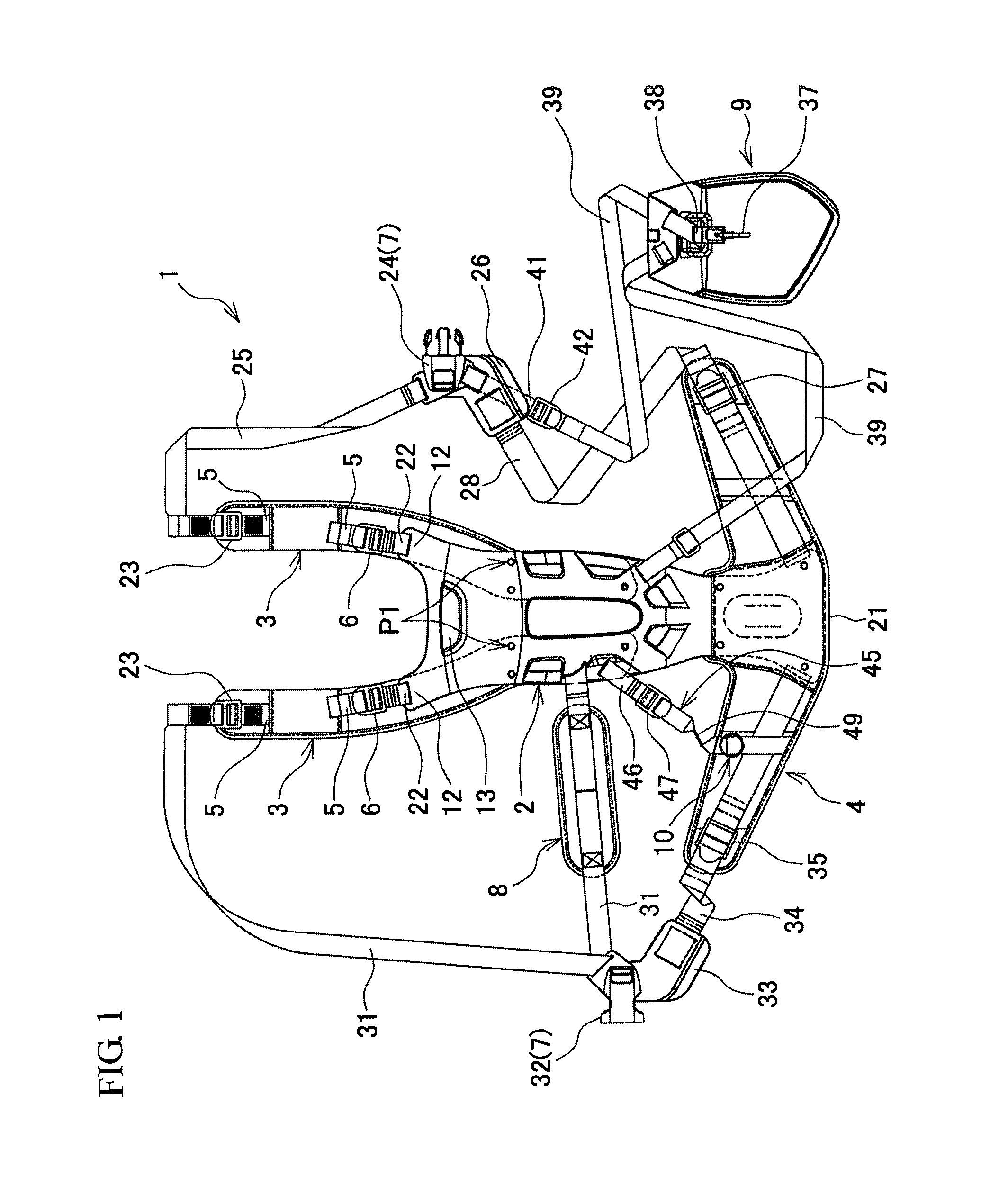Harness
a technology of harnesses and back plates, applied in the field of harnesses, can solve the problems of imposing a burden on the operator, the back plate may not fit in the optimal state of every operator, and the weight of the power tool cannot be sufficiently distributed, so as to achieve the effect of reducing the burden on the operator and simple structur
- Summary
- Abstract
- Description
- Claims
- Application Information
AI Technical Summary
Benefits of technology
Problems solved by technology
Method used
Image
Examples
Embodiment Construction
[0023]An embodiment of the present invention will be described with reference to FIGS. 1 to 7. A harness 1 shown in FIG. 1 is equipment the operator wears in order to support a power tool such as brush cutter, and includes a back plate 2, shoulder strap pads 3, 3, a waist pad 4, shoulder strap belts 5, 5, first belt length adjusters 6, 6, a buckle 7, a side pad 8, a support member 9, and a hanging ring 10.
[0024]As shown in FIGS. 2 and 3, when the operator wears the harness 1, the back plate 2 is placed on the back of the operator. The back plate 2 is a flexible plate-like member extending in the vertical direction and made of a synthetic resin. The back plate 2 has a pair of narrow portions 12 (see FIGS. 1 and 2) protruding upward from the left and right upper ends of the back plate 2 and having a smaller lateral dimension than a lower part of the back plate 2. As shown in FIGS. 1 and 2, a hole 13 that allows the operator to carry the back plate 2 in his / her hand is formed in an upp...
PUM
 Login to View More
Login to View More Abstract
Description
Claims
Application Information
 Login to View More
Login to View More - R&D
- Intellectual Property
- Life Sciences
- Materials
- Tech Scout
- Unparalleled Data Quality
- Higher Quality Content
- 60% Fewer Hallucinations
Browse by: Latest US Patents, China's latest patents, Technical Efficacy Thesaurus, Application Domain, Technology Topic, Popular Technical Reports.
© 2025 PatSnap. All rights reserved.Legal|Privacy policy|Modern Slavery Act Transparency Statement|Sitemap|About US| Contact US: help@patsnap.com



